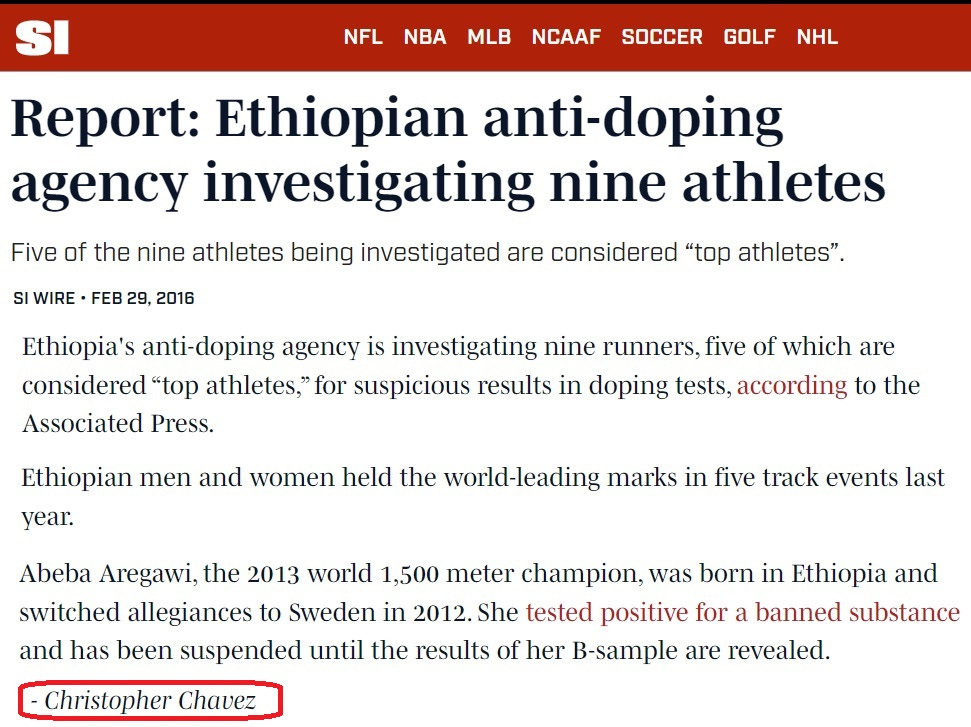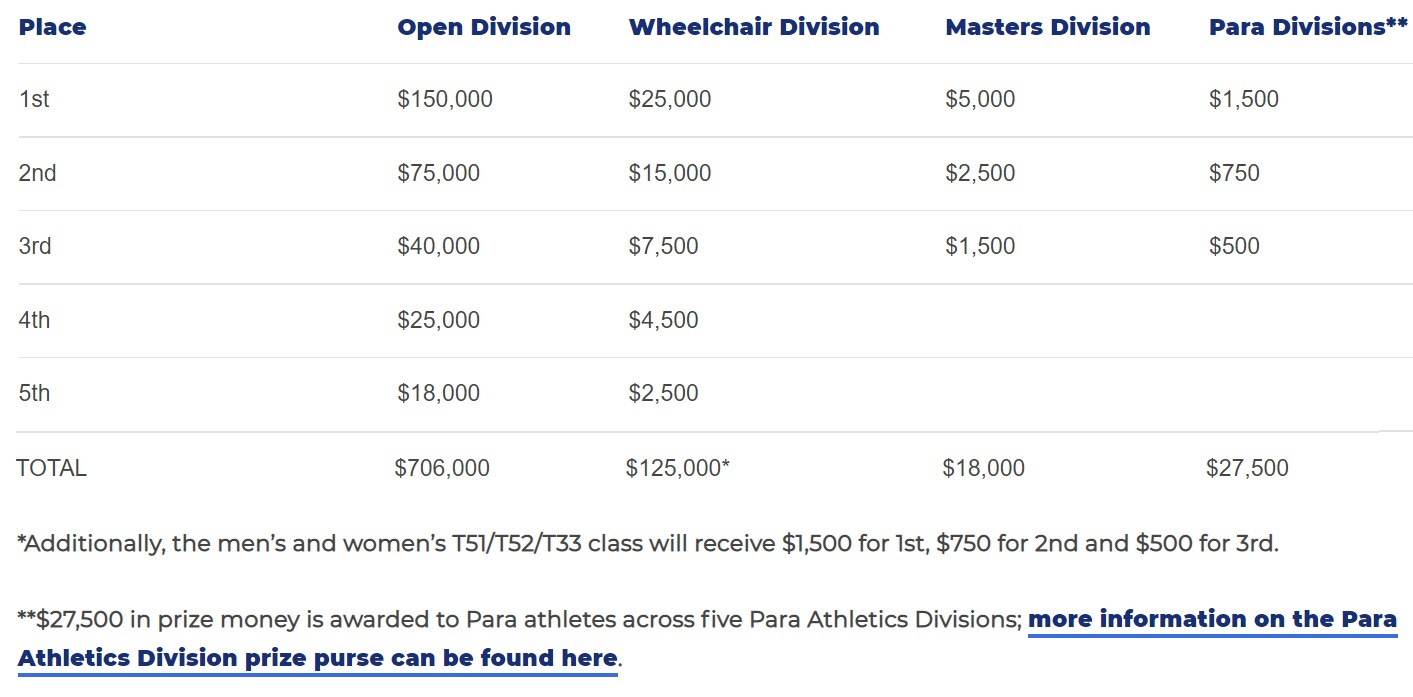Eliud Kipchoge is finally putting himself in a great position to lose a marathon
Watch for Daniel do Nascimento to bring good news to Brazil
The Boston Athletic Association has announced its professional field for the 2023 Boston Marathon, to be run on April 17.
Early January seems like a dicey time for the organizers of a marathon more than three months away to unfurl the names of a bunch of Kenyan athletes scheduled to take part in their event. As recent history shows, past Boston champions from that same country have often encountered career-threatening problems in the near term, such as becoming injured.
Peres Jepchirchir isn’t the only Boston women’s champion in shill-shimmering memory who won’t be at the start in Hopkinton this year. But I won’t sully this post by hinting at the worldwide, sordid, and inescapable specter of the Drug Thing, not even through the unclever use of irony. Especially not in a post mentioning one of the all-time greatest G.O.A.T.s, Eliud Kipchoge, who has stubbornly outrun both age and multiple generations of flamboyantly doped-up competitors to claim the mantle of someone we* can universally admire for his tenacity, durability, and uncommon gifts.
Eliud Kipchoge deciding to race the Boston Marathon for the first time after setting yet another world record in 2022 (2:01:09) is something to get fired up about. Not only is Kipchoge more likely to lose a footrace than at any time in years (he lost badly at the London Marathon in 2020, fading to eighth, but that was unexpected) but he probably knows this is the case, because he knows no level of fitness or demonstrated superiority is enough to overcome the potential effects of Boston’s signature element: late-race climbs and descents after a steep plunge at 25K.
Despite Kipchoge's inclusion in the men’s race, however, the women’s Boston field is the more impressive. Just as was the case last year, Letsrun is ferociously bullish on this.
The fact that Letsrun used virtually the same headline in both years doesn’t mean either one is wrong. And the explosion they reference in world-class times among both men and women in the past few years cannot be explained fully on the basis of shoe improvements alone. There are many ways to demonstrate this, but one of them is to simply ask, say, “Were as many women were running under 2:24 five years ago as are running under 2:21 now?”
They were not. In 2017, 31 women broke 2:24. In 2022, 39 broke 2:21 (and 93 broke 2:24). And two of the three women who broke 2:16 last year came into their 2022 breakout races with personal bests of 2:20:48 and 2:34:01, so form charts aren’t even especially helpful.
John Hancock, the Boston Marathon’s title sponsor since 1986, inking five sub-2:18 women—including 2:14:58 Ethiopienne Amine Beriso—is an undeniable score. But ten women broke 2:18 in 2022 alone. The talent pool at this level is expanding so rapidly it’s almost pointless to try to even locate its outer edges. And most of it is coming from the same place where athletes of all genders for whatever reason have a de facto standing assurance of not being drug-tested virtually anywhere they compete.
This arrangement surely incentivizes talented teenage Ethiopian women to continue pursuing running to the fullest, expanding the number of potential doping beneficiaries even more. Meanwhile, the rest of the world has no choice but to put up with World Athletics’ selective withholding of attempted justice. So they try to keep up--it’s their job.
Readers inclined to offer twat-faced grimaces at my casual suppusations1 of doping by certain Americans should understand that I am not singling them out, allowing for the fact that as an American myself I see more media coverage glorifying, both naively and duplicitously, the feats of American athletes. It would seem fair to make the accepted dirty playing field somewhat more equal, even if the concept itself lacks full coherence.
Perhaps someone should contact the author of this story and see if he wants to revert from dongle-fondling to journalism and pick up on the same thread now that five years have passed.
Including Kipchoge, the 2023 Boston men’s field features eight sub-2:05 athletes. From a numbers perspective, this is no longer worth even a yawn. There were twenty-four sub-2:05:00 performances in 2022 by twenty-one men, with Kipchoge, Amos Kipruto, and Tamirat Tola getting under the barrier twice. Tola averaged 2:03:57 in the two 2022 marathons in which he finished no higher than third, sandwiching these around his winning 2:05:36 at last summer’s World Athletics Championships Marathon in Eugene, Oregon.
Kipchoge has never run a hilly marathon. As far as I know, he hasn’t competed over hills on the roads at all. In 2004, when he 19 or so, he was fourth at the World Cross-Country Championships in the 12K race (now the only distance on offer at World Cross), but I don’t think this adds helpful information—it just reflects Kipchoge’s overall greatness, and perhaps predicted his ability to eventually succeed at the marathon in general.
I think this is relevant not because Kipchoge has been coddled for years by runway-style courses—and sometimes the creation of a partial vacuum around him—and can’t handle a rolling course. I’m certain he can. It’s that even had he already won Boston more than once, it wouldn’t matter. There is nothing a runner can do to establish immunity to the topography of the latter third of the Boston course.
Sometimes, the pounding just gets to you. A runner who one year handles the descents from mile 21 to the finish with ease may the next year find his quads chewed to hamburger over the same stretch despite ostensibly “identical” shoes, fitness, pacing and conditions. Maybe some runners are more likely on any day to escape this than others, but because of this one factor, surprise winners are probably more likely to emerge in Boston than at any other World Marathon Major. What supershoes do, both the day and in terms of muscle recoverability, can’t batter this issue into complete quietude.
Also, Kipchoge will turn 40-ish in around November. Something is more likely to give for good every time he gets out there. The man is a freak, going from an 8:07.39 indoor two-mile in 2012—making him #5 all-time in that event then and #6 today—to a 2:04:05 marathon the next year, good enough to then make him #4 all-time. But even Nolan Ryan’s legs finally wore out.
Kipchoge will go in as the favorite, just not as heavy a favorite as he would were the course a gimme. And if the weather is good—a MASSNORMOUS if—then he and others will surely chase the 2:03:02 course record and the $50,000 bonus awarded for breaking it. That mark was set by Geoffrey Mutai in a GIGANTIC tailwind in 2011, but Kipchoge and a few others could claim that this spring in neutral conditions. The same goes for the women’s official course record of 2:19:59 from a second-place effort in 2014 (Rita Jeptoo’s winning 2:18:57 from the same race was later scrubbed when she failed a doping test).
I’ll preview the races in detail when it makes sense to do so. And I’ll be mad if Kipchoge for whatever reason winds up not starting the 2023 Boston Marathon, and not because much of this bloviation will have gone to more waste than usual.
The men’s field includes 72 standard runners (including masters), 28 wheelchair racers, and 8 Paralympians, while the corresponding numbers on the women’s side are 69, 17 and 3. I am not sure which is more likely to cause the largest online ruckus: That 54.8% of the overall professional field is male; that 64.3% of the combined wheelchair and Paralympian field is male; that 28.4% of the elite field consists of wheelers and Paralympians; or that 21.6% of the total guaranteed prize money will go to wheelers and Paralympians, who will collectively pocket eight and a half times what the three male and three male masters’ prize-money winners will. These objections would of course be nonuniform across observer factions.
I think this distribution makes sense. For one thing, these are all real categories of people operating within defined limits. They’re not claiming to be warlocks or otherwise something they are not, or that no human will ever be. They are trying to get the best out of themselves, and now they have a little monetary incentive to chase it. And it’s not as if the B.A.A. hasn’t assembled fantastic men’s and women’s fields in the standard bipedal categories; some of those invited runners aren’t even close to world-class, so the elite coordinators went plenty deep there.
The other thing is that most of us are likely to have some form of serious physical problem soon—limbs falling off, eyes exploding, pubes catching on fire in situations where this was previously rare. Although no one will be able to explain this phenomenon (cough cough *climate change* cough cough), it will naturally force a higher percentage of people into nontraditional categories. And the sharp concomitant diminution in overall numbers of people over 40 thanks to more lethal instances of these same morbidities will render masters categories irrelevant.
So in reality, with its revamped prize-money structure, the B.A.A. is just anticipating imminent and permanent demographic shifts.
The women’s field also includes a 2:33:22 marathoner from Russia. The B.A.A. seems to have quietly rescinded its 2022 ban on Russians or Belarussians living in their home countries, even those who had already registered for the race. The people behind that should be forced to sit in a room watching low men in yellow coats calmly set fire to one Ukrainian flag after another while discussing how their boy Zelenskyyyyy likes it the pee-tape way.
If that sounds obnoxious, consider the statement the B.A.A. was making by punishing people from Russia and Belarus for the sins of their overlords. And besides, the race chooses its political battles in accordance with the news cycle, not any foundational ethics. Its management was silent, after all, on the Biden Administration’s September 2021 decision to impose sanctions on already food-starved Ethiopia and Eritrea. That said, I’m sure not one person who is employed by that organization, Current Thing fanatics all, is even aware of the U.S. involvement in hostilities in that part of Africa.
(Social share photo of Boston’s financial district from Camayah Photography.)
A supposition couched with sufficient vigor, recurrence, or both to plausibly constitute an accusation by traditional epistemic standards. (Source: Own Ass, 2023)




